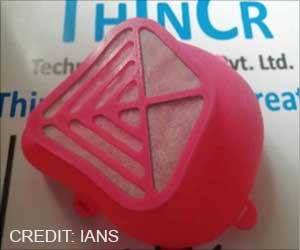“By visualizing the droplets and the flow, you realize the number of physical phenomena taking place around us that go unnoticed, such as the complex interactions between natural body plumes, exhalation, and ventilation,” said author Carlos Pea-Monferrer.
Researchers analyzed what happens when speech droplets are exhaled from a row of sitting passengers in a ventilated space, like those in public vehicles. In some of these systems, the air is injected at the top and extracted at the bottom through the vents near the window seats.
This generates an internal recirculation to enhance thermal comfort and remove contaminants, but the researchers were interested in whether certain seat positions affect the circulation adversely.
They found droplets from the window seat rose more and invaded the space of other passengers to a lesser extent shortly after exhalation.
Moreover, droplets released from the middle seat contaminated the aisle passengers more, indicating the downward flow of personal ventilation in aisle seats could move droplets down and increase the risk of infection.
Researchers modeled various scenarios in close detail, such as a situation where passengers in different seats were pronouncing a vowel for a few seconds. By creating a detailed representation of the flow field and tracking every single droplet, they were able to reconstruct their ventilation paths.
In the future, they will reproduce conditions that more closely represent the diverse human activity on public transport vehicles to help inform actions, design, and operation of future ventilation systems for safer environments.
These high-resolution simulations were focused on public vehicles, but they could be extended to commercial or residential buildings, health care facilities, offices, or schools.
Source: Medindia


